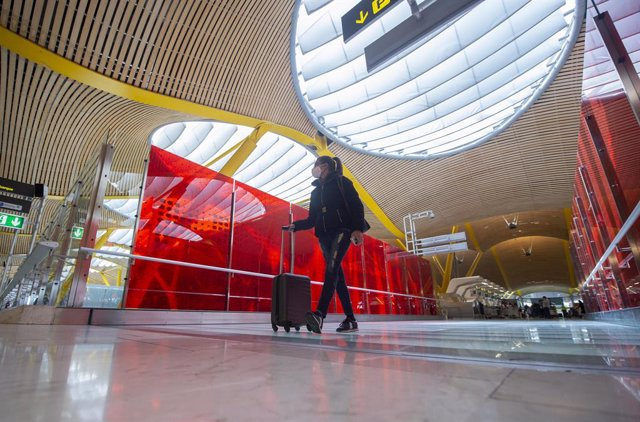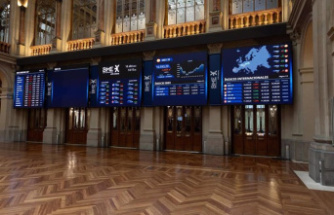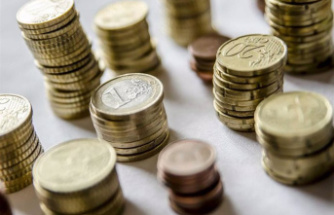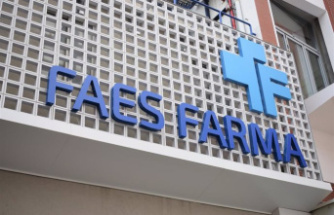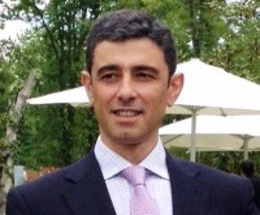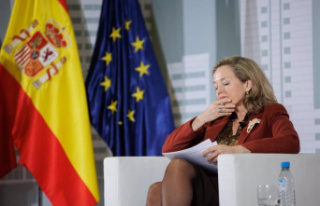Aena will implement the new 3D X-ray scanners that allow baggage to be inspected without opening it
Passengers transiting through Spanish airports will not have to remove liquids and laptops from their luggage at controls. Aena plans to implement new 3D X-ray scanners that will allow baggage to be inspected without opening it. Madrid-Barajas and Barcelona-El Prat will be the pioneers in implementing the system next year.
The airport manager has confirmed to Europa Press that it is going to make a "significant" investment in EDSCB (Explosive Detection System for Cabin Baggage) technology, despite the fact that it is not mandatory in Spain.
These systems are equipment with X-ray technology that generates a 3D image, which facilitates baggage inspection: electronic devices will no longer have to be taken out in separate trays or liquids in plastic bags to pass control, saving time to the traveler, without losing security in the procedure.
"Security is a priority for Aena, which is committed to the latest technologies to be at the forefront of the safest airports," the airport manager says.
The new controls will represent a step forward both in improving safety and in passenger comfort. Currently liquids, perfumes, creams, aerosols, foams, gels, shampoo and toothpaste had to go in individual containers with a capacity of no more than 100 milliliters, contained in turn in a transparent plastic bag with an opening/closing system and with a capacity not exceeding 1 liter (bag of approximately 20 x 20 centimeters).
Only one bag per passenger can be transported, including children, and that bag had to be placed on trays at security control, outside of luggage.
With the new regulations, travelers will be able to carry toiletries such as colognes, creams or makeup of medium or family size, as reported today by the newspaper 'El País'.
Currently, the only drinks, cosmetic products and perfumes allowed were those purchased at the airport in approved and sealed security bags, and containing the purchase receipt.
Scanners using this technology are already being tested at London's Heathrow, Gatwick and Stansted airports, and the UK government has announced that it will change security regulations so that they will be operational by 2024.
In addition, the US Transportation Security Administration (TSA) tested the new devices at fifteen airports, including Los Angeles, Oakland, San Diego and Chicago.
In Europe, the European Commission has requested that these restrictions imposed after the attacks on the Twin Towers in New York on March 11, 2001 be relaxed. Liquid control was established in 2006 following a frustrated terrorist attack (explosives hidden in drink cans) planned by Al Qaeda against seven planes taking off from Heathrow. The international association of airlines IATA also supports the proposal to gradually ease the restrictions.
INVESTMENT OF MORE THAN 1,100 MILLION
In the Airport Regulation Document (Dora) presented in September 2021, Aena already indicated that the manager would reinforce the operational safety management systems. Thus, during the five-year period (2022-2026), "state-of-the-art technologies will be incorporated into security controls to improve the efficiency of processes and facilitate passenger transit."
In a decade (2018-2028), Aena will have invested 1,170 million euros in physical security, with the renewal of hold baggage inspection equipment and security filters.
Aena ensures that the security levels/standards are the same at all airports in the network, "whether large or small".
The measure is part of a global project to modernize the security filters at Spanish airports managed by Aena, which will also include new automated lines for handling hand luggage (ATRS) and the remote inspection system, which also speeds up the flow in the security filters of the busiest airports.
Aena explains that "ATRS allows suspicious bags to be separated from those that are not, and the management and return of trays automatically, without the passenger having to worry about them."
In addition, the remote inspection system allows baggage inspection to be carried out from a remote room, without the need for the security guard to be physically in the security filter (greater concentration).
This is a global project to modernize security filters, which also includes the deployment of biometric systems for access to controls, according to Aena.
According to DORA, the filters with the new technology will be installed in 2024 at the Madrid-Barajas and Barcelona-El Prat airports, which concentrate 40% of passenger traffic. In the year 2025 at the airports of Palma de Mallorca and Málaga-Costa del Sol and in the year 2026 in Gran Canaria, Tenerife Sur, César Manrique Lanzarote, Fuerteventura, Alicante-Elche Miguel Hernández, Ibiza, Valencia, Bilbao and Menorca.
As regards the renewal of hold baggage inspection equipment and security filters, this will involve the acquisition of 261 pieces of equipment, as well as the necessary works for its integration.
AENA INVESTMENT
These innovation projects will be carried out thanks in part to financing lines received by the airport manager. Last January, Aena reported that it had signed a financing line with the European Investment Bank (EIB) for an amount of 800 million euros for security and innovation projects.
This loan involved a first tranche of 200 million euros available over the next 2 years, with a maximum repayment term of 20 years from disbursement and a 5-year grace period.
The main investments were earmarked for safety and security initiatives, including runway work and taxiway redesign, according to the latest updates from the European Aviation Safety Agency (EASA); and to the renewal of the aircraft parking apron lighting system.
Likewise, the loan will be dedicated to investments related to the rehabilitation of pavements in the area of operations, the renewal of emergency control systems, the replacement of aircraft boarding bridges, the supply and installation of security filter equipment or the construction of a new power plant at the Adolfo Suárez Madrid-Barajas Airport, among other actions.
Other Aena projects that could be financed with this loan are those based on information technology (process automation, cybersecurity, database management, BIM - building information modelling- or software acquisition and license) and innovation (equipment biometric, development of the data driven platform and processes related to digitization in the customer experience and the efficiency of passenger terminals).

